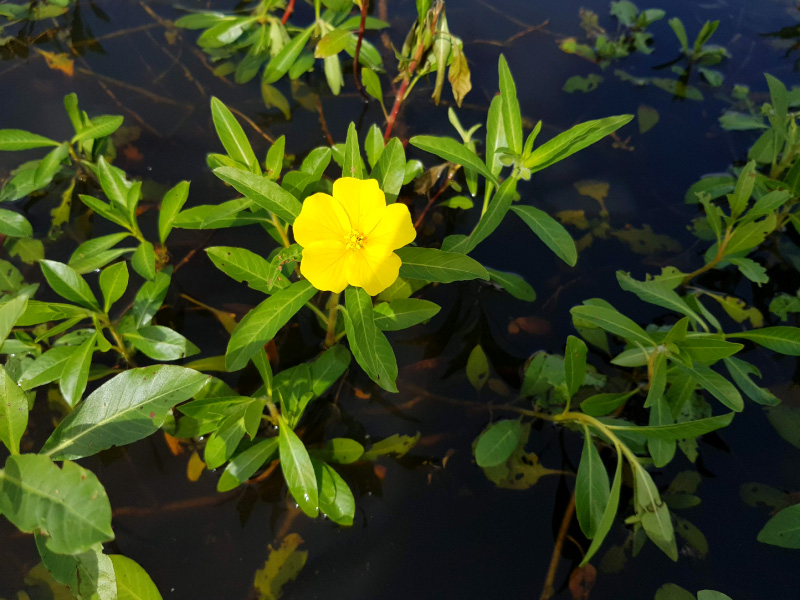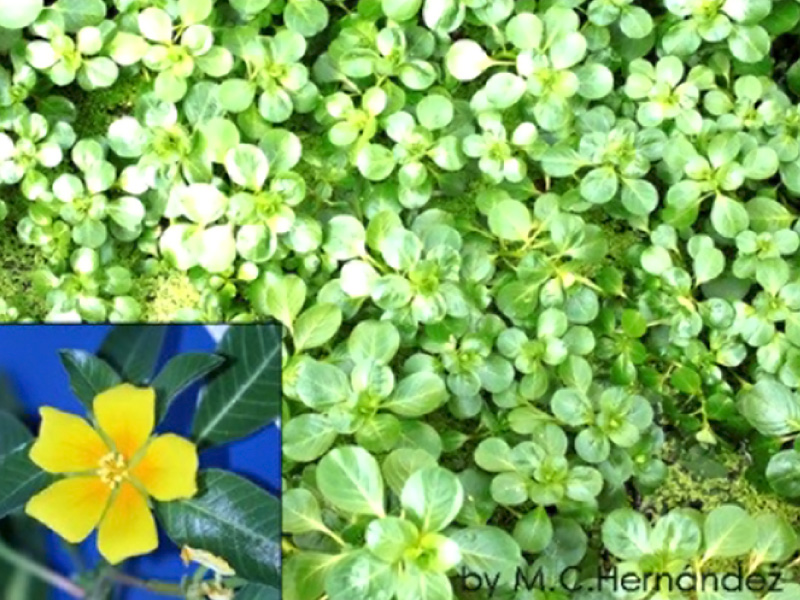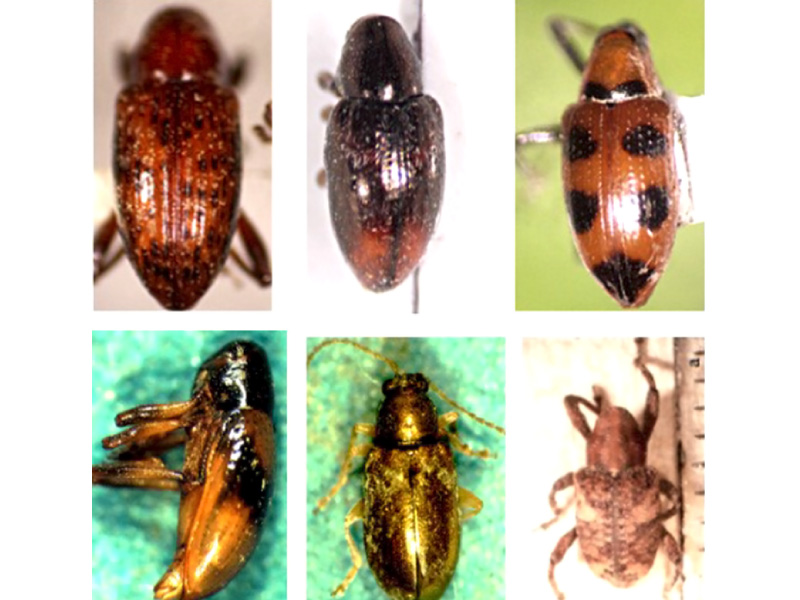21 May Ludwigia grandiflora ssp. hexapetala. (Water Primrose)
Ludwigia grandiflora ssp. hexapetala. (Water Primrose)
The Water Primroses, Ludwigia grandiflora, L. g. ssp. hexapetala and L. peploides are invasive aquatic plants that form extensive monospecific stands. They occupy the coasts of deep water bodies and can completely cover lagoons and gutters, alter water flow and decrease the biodiversity of ecosystems.
These plants are South American species that have dispersed naturally and also as ornamentals in the USA and various countries in Europe. They reproduce by seeds and vegetatively and can dominate the vegetation when introduced into lakes, rivers, lagoons, ditches or streams. In our surveys in Argentina we have found a variety of herbivorous insects associated with L. g. subsp. hexapetala; 6 curculionid species with mining larvae (Tyloderma spp.; Merocnemus sp.), 1 species with fruit-mining larvae(Tyloderma nigromaculatum), 4 species with apical leaf defoliation larvae, 1 thrips species that feeds on cellular content (Liothrips ludwigi) and 3 sap feeding species (Pissonotus spp.). (Ref.: Hernández et al. 2014. DOI: 10.1093 / jisesa / ieu063). We are currently carrying out molecular, biogeographic and ecological studies of these species; we are also describing their diversity, abundance and implications as weeds in rice crops in Argentina.
Staff:
Investigadores a cargo: M. Cristina Hernández, Guillermo Cabrera Walsh
Estudiante de doctorado: Ana Faltlhauser
Cooperators:
Paul Pratt, USDA-ARS-ISPHRU, Albany, California, EE.UU.






